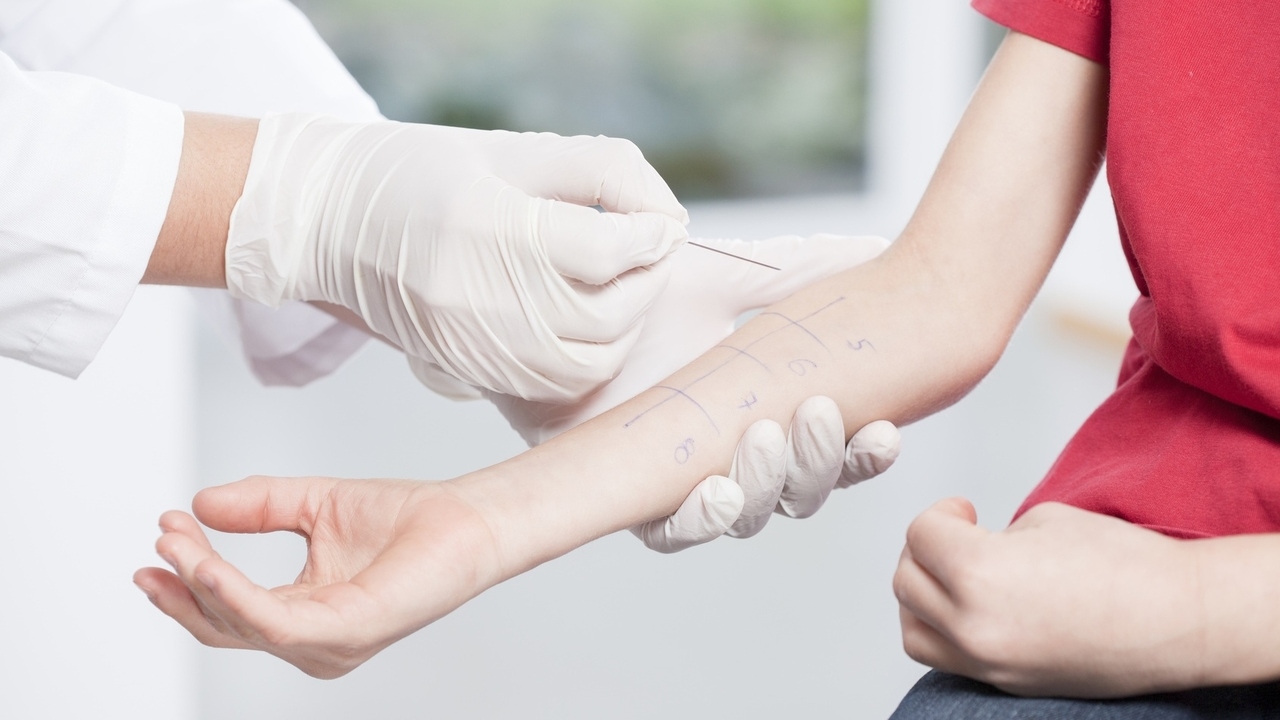 Photographee.eu/Fotolia
Photographee.eu/Fotolia
If you get seasonal sniffles, you probably assume you have hay fever or some kind of allergy. But if over-the-counter medications aren’t getting the job done, it might be time to have some test done.
Find out exactly what you are allergic to, so you can be more precise in your treatment plan.
If you are prone to allergies, your doctor may refer you to an allergist for testing to find out exactly what you are allergic to. An allergist is a specialist with extra training to diagnose and treat allergies, asthma and immunologic disorders.
Allergy testing can help your allergist pinpoint the best treatment to give you relief from your allergy symptoms.
There are two basic types of allergy testing: skin tests and blood tests.
Skin tests for allergies
As the name suggests, skin tests are performed on or just under the surface of your skin. Things that cause an allergic reaction are called allergens.
During the test, your skin is lightly scratched and small amounts of your possible allergens are placed on the scratches. This test is usually done on your back or on the inside of your forearm and are called skin prick or scratch tests.
Many different allergens are typically tested at the same time by applying the allergens in rows on your skin.
The substances that are tested can vary, depending on what plant allergens grow in your area. Other common allergens besides pollens that may be tested for include dog and cat dander or dust.
Another type of skin test involves injecting a small amount of allergen just under the surface of your skin. It's called an intradermal skin test.
This is more commonly done with things like bee venom or penicillin. This method may be used as a backup test to verify a scratch test reaction.
With both of these test methods, a small welt or red, itchy spot similar to a mosquito bite will develop if you are allergic to that allergen. If there is no reaction, you are not allergic to that particular allergen.
It usually takes about 20 minutes for an allergic reaction to show on your skin, but delayed reactions are also possible.
A third skin test method uses a skin patch to test for contact dermatitis, which is a reaction that develops after the skin comes in contact with an allergen. Common examples are rashes from poison ivy or certain products like detergents, perfumes or lotions.
In this test, a pad is soaked in an allergen and taped to the skin for one to three days. The health care provider will check the area in 72 to 96 hours.
Blood tests for allergies
Another way to test for allergies is to send a blood sample to a lab for testing. This method may be used if you cannot stop taking a medication that will interfere with a skin test. It is also used for patients with skin conditions that prevent skin testing, such as psoriasis or eczema.
Testing for an allergic reaction can be dangerous, depending on how severe your reaction is. Blood testing is the preferred method in these cases, including testing for allergic reactions to certain medications.
Babies and small children may do better getting blood drawn once rather than having multiple skin tests. And people with darker skin color may get a more accurate result from blood testing if skin reactions are difficult to see.
Blood testing can be used to test for allergic reactions to environmental allergens including pollen, mold, dust mites and animal dander. This method can also be used to test for food allergies and reactions to some medications.
Because blood must be sent to a lab for testing, it can take several days to get results from blood testing. This type of test is also typically more expensive than skin testing.
If any of your allergy tests produce a positive result, your doctor will determine what treatment will be best for your overall health and can help control your allergy symptoms.
If you have questions about allergies or if you're wondering whether you should be tested, talk to your health care provider.
Reviewed May 31, 2016
by Michele Blacksberg RN
Edited by Jody Smith
Allergy Testing. American Academy of Allergy Asthma & Immunology. Web. Retrieved May 25, 2016.
https://www.aaaai.org/conditions-and-treatments/library/at-a-glance/allergy-testing
Allergy testing – skin. Medline Plus. Web. Retrieved May 25, 2016.
https://www.nlm.nih.gov/medlineplus/ency/article/003519.htm
Allergy Testing Overview. American College of Allergy Asthma & Immunology. Web. Retrieved May 25, 2016.
http://acaai.org/allergies/treatment/allergy-testing
Allergy Tests. WebMD. Web. Retrieved May 25, 2016.
http://www.webmd.com/allergies/allergy-tests
Contact Dermatitis. WebMD. Web. Retrieved May 25, 2016.
http://www.webmd.com/skin-problems-and-treatments/contact-dermatitis-rash





Add a Comment4 Comments
My husband is worried he's allergic to something in the air, and I suggested he get an at home test to check if this is true. Your article had great information about getting a test like this, and I liked how you said if my husband does blood testing, he should be aware that it takes several days to get results back from the lab and can be more expensive than skin testing. Thanks; I'll share this with my husband to help him test for allergies.
May 24, 2019 - 6:47amThis Comment
Anon,
Best of luck to your husband! Let us know how he made out.
Helena
May 24, 2019 - 1:58pmThis Comment
I was tested when I was little for different types of allergies, but I think I want to get another test in case I developed a new allergy. I didn't know you could do a blood testing for allergies. I didn't like the idea of seeing my skin reacting to the allergies so I think I will try a blood testing. Thanks!
April 11, 2017 - 9:48amThis Comment
I often get sick in the spring and fall. Thanks for the advice about how you can get allergy tested, and then find the best treatment for yourself. Another thing to consider is finding and allergy doctor that you like and get along with. http://www.oakbrookallergists.com/stinging-insect-allergies.html
August 15, 2016 - 11:59amThis Comment